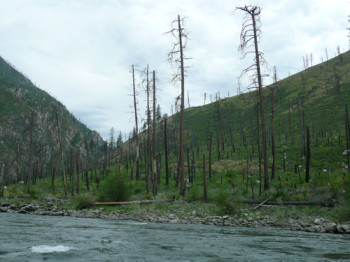By Lisa D. Jenkins
ItÂs not the story, itÂs the telling of the story.
Last week, I was in the wilds of Idaho, rafting the Main Salmon River of No Return. I left the online world and was completely disconnected from technology; no smartphone, no laptop. I did allow myself to bring a camera and Flip.
I took images and footage sparingly because a couple of years ago I realized I was losing memories because I was too busy trying to capture them digitally. But I do have a few incredible reminders that will help me remember all the amazing things I saw and experienced.
When The Husband picked me up from my trip, I couldnÂt wait to get home and show and tell him everything.
The memories were easy for him to consume: the big bright trout I caught at the mouth of Sheep Creek, the massive bald eagle that flew just over my head,
Oddly, the images and video were more difficult. He looked through them and wasnÂt nearly as exuberant as I thought heÂd be. Take this image for instance, what do you see?
You see a burned out forest. Wildland fire is not uncommon in Idaho and we often see sections of landscape marred like this. While mildly interesting, itÂs not uniquely remarkable. Until you know that as we were rowing by, our guide Matt explained that he was rowing through this fire last year – at this very spot.
In the same way that story provides context that informs my image, you need to inform the content you share with context for your readers.
ItÂs not just the pieces of your story that make it remarkable, itÂs how you thread those pieces together that tell a remarkable story.
What does this look like?
Do you have a new product? Outline the real-world problems your product solves to inform a simple demo video. This makes it easy for people to know who the product will help. If itÂs not them, they might recognize the struggles of someone they know.
Are you adding a new service? Let your audience in on how you detected a gap in the services you provide, to inform the launch for your latest offering. This builds on established trust and gives your audience a behind the scenes view of how your company works to stay current with their needs.
Have you reached a goal? Use a timeline or infographic to inform a milestone your business is celebrating. This help others understand where you started and how exciting it is for you to mark the occasion. People whoÂve been with you from the beginning will appreciate the walk down memory lane and newer readers will appreciate not feeling left out.
Telling your story.
As you execute your content strategy, include contextual elements that weave your disparate content into a cohesive story. Each point of reference you provide helps your readers feel included and invites them to go deeper into the story with you.
